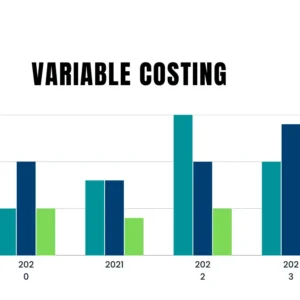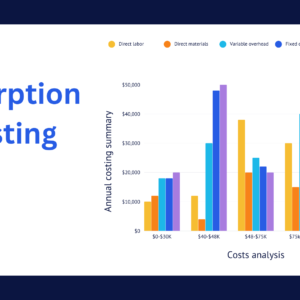- Introduction
- Understanding Manufacturing Overhead
- Impact of Manufacturing Overhead on Product Pricing
- Factors Affecting Manufacturing Overhead Costs
- Pricing Strategies and Manufacturing Overhead
- Controlling and Reducing Manufacturing Overhead
- The Role of Technology in Managing Manufacturing Overhead
- Conclusion
Introduction
Manufacturing overhead refers to indirect costs incurred during the production process that cannot be directly traced to a specific product. It includes expenses such as facility rent, utilities, equipment depreciation, maintenance and repairs, supervision, quality control, and other indirect labor costs.
These costs are necessary for the overall production operation but do not relate directly to the raw materials or direct labor used in manufacturing a specific product. Manufacturing overhead is typically allocated or apportioned to products using predetermined rates or cost drivers to determine the total cost of production. Pricing strategy is important in modern competitive environment.
Importance of understanding the role of manufacturing overhead in product pricing
Accurate pricing:
Manufacturing overhead is a significant component of the total cost of production. Failing to consider these costs properly can result in underpricing or overpricing of products, affecting profitability and competitiveness.
Cost control:
By understanding the impact of manufacturing overhead on product pricing, businesses can identify areas of cost inefficiency and implement measures to control and reduce overhead expenses, improving overall cost-effectiveness.
Profit margin optimization:
Properly factoring in manufacturing overhead allows businesses to set prices that not only cover direct costs but also contribute to desired profit margins, ensuring financial sustainability and growth.
Competitive pricing:
Competitors who effectively manage their manufacturing overhead can offer competitive prices. Understanding the role of manufacturing overhead helps businesses stay competitive by setting prices that reflect the true cost of production while remaining attractive to customers.
Decision-making:
Knowledge of manufacturing overhead enables informed decision-making regarding product line profitability, investment in new equipment, process improvements, and resource allocation, contributing to long-term business success.
Understanding Manufacturing Overhead
Definition and examples of manufacturing overhead cost
Manufacturing overhead costs are indirect expenses incurred during the production process that cannot be directly assigned to a specific product. Examples of manufacturing overhead costs include facility rent, utilities, depreciation of production equipment, maintenance and repairs, supervision salaries, quality control expenses, and other indirect labor costs.
These costs are essential for the overall manufacturing operation but do not directly relate to the raw materials or direct labor involved in producing a specific item. Allocating and understanding these costs is crucial for accurate product costing and determining the total cost of production.
Differentiating manufacturing overhead from direct costs
Differentiating manufacturing overhead from direct costs is important in cost accounting and financial analysis.
Direct costs are directly attributable to the production of a specific product or unit of output. These costs can be easily traced and allocated to a particular product, such as direct materials and direct labor. Direct costs vary with the level of production or the number of units produced.
On the other hand, manufacturing overhead costs are indirect costs that cannot be directly linked to a specific product. These costs are incurred to support the production process as a whole, including costs related to facilities, equipment, utilities, maintenance, supervision, and quality control. Manufacturing overhead costs are not directly tied to individual units and are typically allocated to products based on predetermined rates or cost drivers.
Common types of manufacturing overhead expenses
Facility Costs:
Rent, property taxes, insurance, and maintenance expenses for the production facility.
Equipment Costs:
Depreciation, maintenance, repairs, and operating expenses associated with machinery and equipment used in production.
Utilities:
Costs for electricity, water, gas, and other utilities necessary for running the production processes.
Supervision and Management:
Salaries and benefits of supervisors and managers overseeing the production operations.
Quality Control:
Expenses related to quality control activities, including inspections, testing, and certifications.
Indirect Labor:
Wages and benefits for employees involved in production support functions such as material handling, cleaning, and maintenance.
Inventory Costs:
Holding costs for raw materials, work-in-progress, and finished goods, including storage, handling, and insurance.
Research and Development:
Expenses related to developing new products, improving existing processes, and innovation.
Understanding and managing these manufacturing overhead expenses is crucial for accurate product costing and profitability analysis.
Impact of Manufacturing Overhead on Product Pricing
Allocation of manufacturing overhead to products
The allocation of manufacturing overhead to products is a crucial step in determining the total cost of production for each product. This allocation allows for a fair and accurate representation of the indirect costs associated with the production process.
Manufacturing overhead is typically allocated to products using predetermined rates or cost drivers. Commonly used allocation bases include machine hours, direct labor hours, or material costs. The allocation rate is calculated by dividing the total manufacturing overhead costs by the total units of the allocation base.
By allocating manufacturing overhead to products, businesses can attribute a portion of the indirect costs to each product, enabling a more accurate understanding of the true cost of production and facilitating informed pricing decisions and profitability analysis.
Influence of manufacturing overhead on cost per unit
Manufacturing overhead has a direct influence on the cost per unit of a product. As manufacturing overhead costs are allocated to each unit produced, they add to the overall cost of production per unit. This means that as manufacturing overhead increases, the cost per unit also increases.
The inclusion of manufacturing overhead in the cost-per-unit calculation provides a more comprehensive understanding of the total expenses incurred in producing each unit. It is important to accurately allocate manufacturing overhead to ensure that the cost per unit reflects the true cost of production and aids in effective pricing and profitability analysis.
Incorporating manufacturing overhead in the calculation of product cost
Incorporating manufacturing overhead in the calculation of product cost is essential for determining the true cost of producing a product. By including manufacturing overhead, which consists of indirect costs, in the calculation, businesses can accurately assess the total expenses incurred in the production process.
This helps in setting competitive prices, making informed pricing decisions, and determining product profitability. It also enables organizations to evaluate the efficiency and cost-effectiveness of their operations. By accurately calculating the product cost, businesses can ensure that pricing strategies align with cost realities and contribute to sustainable financial performance.
Factors Affecting Manufacturing Overhead Costs
Volume of production and economies of scale
The volume of production and economies of scale have a significant impact on manufacturing overhead costs. As the volume of production increases, the manufacturing overhead costs per unit decrease due to economies of scale. This is because certain fixed overhead costs, such as facility rent and equipment depreciation, can be spread across a larger production output.
By leveraging economies of scale, organizations can achieve cost efficiencies, reduce the cost per unit, and enhance profitability. It highlights the importance of optimizing production volumes to maximize cost savings and improve competitiveness in the marketplace.
Complexity of production processes
The complexity of production processes can influence manufacturing overhead costs. More complex production processes often require additional resources, specialized equipment, and skilled labor, which can contribute to higher manufacturing overhead expenses. Complex processes may involve intricate setups, frequent changeovers, or stringent quality control measures, leading to increased costs in terms of setup time, maintenance, and quality assurance.
Manufacturers need to analyze and manage the complexity of their production processes to minimize overhead costs while ensuring efficient operations and maintaining product quality. Simplifying and streamlining processes can help reduce complexity and associated overhead expenses.
Resource utilization and efficiency
Resource utilization and efficiency play crucial role in managing manufacturing overhead costs. Effective utilization of resources, such as raw materials, labor, and equipment, ensures that they are optimally utilized, minimizing waste and reducing overhead expenses. Efficient production processes and workflows help maximize productivity and output while minimizing downtime and inefficiencies that can lead to increased overhead costs.
By implementing lean manufacturing principles and continuous improvement practices, organizations can improve resource utilization, eliminate bottlenecks, and enhance overall efficiency, resulting in lower manufacturing overhead costs and improved profitability. Effective resource management is key to achieving cost-effectiveness and competitiveness in the manufacturing industry.
Pricing Strategies and Manufacturing Overhead
Cost-plus pricing approach and the inclusion of manufacturing overhead
The cost-plus pricing approach incorporates manufacturing overhead in the pricing of products. In this approach, the cost of production, including direct costs and allocated manufacturing overhead, is calculated, and a desired profit margin is added to determine the final price. By including manufacturing overhead in the cost calculation, businesses ensure that the indirect costs associated with production are covered.
This approach helps in achieving profitability and allows businesses to recover their costs while accounting for the additional expenses incurred in running the manufacturing operations. It provides transparency in pricing and ensures that overhead costs are appropriately accounted for in the pricing strategy.
Importance of accurate manufacturing overhead allocation for competitive pricing
Accurate manufacturing overhead allocation is crucial for competitive pricing in several ways.
First, it enables businesses to understand the true cost of production, including both direct costs and overhead expenses. This knowledge is essential for setting competitive prices that cover all costs while maintaining profitability.
Second, accurate allocation ensures fairness in pricing, as it distributes the burden of overhead costs appropriately across products. This prevents underpricing and ensures that each product contributes its share to cover the overall costs.
Finally, accurate manufacturing overhead allocation helps businesses make informed pricing decisions by providing a clear picture of the cost structure, allowing for strategic pricing adjustments to remain competitive in the market while maximizing profitability.
Balancing manufacturing overhead costs with market demands and profitability goals
Balancing manufacturing overhead costs with market demands and profitability goals is essential for sustainable business success. It requires a careful evaluation of the market dynamics, customer expectations, and cost structures. By optimizing manufacturing processes and eliminating waste, businesses can reduce overhead costs while maintaining product quality and meeting market demands.
Effective cost management strategies, such as lean manufacturing and efficient resource utilization, help strike a balance between minimizing overhead expenses and delivering value to customers. Additionally, regularly reviewing and adjusting pricing strategies based on market conditions and profitability goals ensures that overhead costs are appropriately balanced with revenue generation, fostering long-term competitiveness and profitability.
Controlling and Reducing Manufacturing Overhead
Lean manufacturing principles for overhead cost reduction
Lean manufacturing principles provide effective strategies for reducing overhead costs:
- Waste elimination: Identifying and eliminating non-value-added activities and processes reduces unnecessary expenses and streamlines operations.
- Process optimization: Streamlining production processes and reducing cycle times minimize resource wastage and improve efficiency.
- Continuous improvement: Encouraging a culture of continuous improvement promotes cost-saving ideas and enhances productivity.
- Standardization: Implementing standardized work procedures and practices reduces variability and increases efficiency, leading to cost reduction.
- Cross-training: Training employees to perform multiple tasks increases flexibility and reduces the need for specialized labor, resulting in cost savings.
By embracing these lean principles, businesses can achieve significant overhead cost reductions while improving operational efficiency and overall profitability.
Also read :The Role of Lean Manufacturing in Reducing Manufacturing Overhead
Identifying and eliminating waste in manufacturing processes
Identifying and eliminating waste in manufacturing processes is a key aspect of lean manufacturing. Waste, also known as “muda,” can take various forms, including overproduction, excess inventory, waiting times, unnecessary transportation, defects, and unused employee skills. By conducting thorough process analyses, businesses can identify areas of waste and implement strategies to eliminate or minimize them.
This may involve improving workflow, optimizing inventory levels, reducing setup and changeover times, implementing quality control measures, and empowering employees to contribute to waste reduction efforts. The elimination of waste improves efficiency, reduces costs, and enhances overall productivity in manufacturing operations.
Implementing efficient resource utilization and cost-control measures
Implementing efficient resource utilization and cost-control measures is essential for optimizing manufacturing overhead. By closely monitoring and managing resources such as raw materials, labor, and equipment, businesses can reduce waste and increase operational efficiency. This includes implementing just-in-time inventory systems, optimizing production schedules, and minimizing downtime.
Cost-control measures may involve negotiating better supplier contracts, implementing energy-saving initiatives, and identifying areas of unnecessary spending. By effectively utilizing resources and controlling costs, businesses can improve their bottom line, reduce manufacturing overhead, and enhance overall profitability.
The Role of Technology in Managing Manufacturing Overhead
Automation and Digitization for streamlined operations
Automation and digitization play a significant role in streamlining manufacturing operations and reducing overhead costs. By automating repetitive and manual tasks, businesses can improve efficiency, minimize errors, and reduce labor costs. Digitizing processes, such as inventory management, production planning, and quality control, enables real-time data monitoring and analysis, leading to better decision-making and resource optimization.
Additionally, automation and digitization facilitate seamless integration and communication across various departments, enhancing collaboration and reducing coordination efforts. Adopting advanced technologies, such as robotics, IoT devices, and data analytics, enables businesses to achieve higher productivity levels, minimize waste, and ultimately reduce manufacturing overhead while increasing competitiveness in the market.
Data analysis and predictive modeling to optimize resource allocation
Data analysis and predictive modeling play a crucial role in optimizing resource allocation and reducing manufacturing overhead. By analyzing historical data and using predictive modeling techniques, businesses can gain insights into resource utilization patterns and make informed decisions about allocating resources more efficiently. This includes determining the optimal inventory levels, staffing requirements, and production schedules.
Predictive models can also help forecast demand, allowing businesses to adjust resource allocation accordingly, avoiding unnecessary costs associated with overproduction or stockouts. By leveraging data analysis and predictive modeling, businesses can achieve better resource utilization, reduce wastage, and improve overall operational efficiency, leading to significant cost savings in manufacturing overhead.
Real-time monitoring and tracking of manufacturing overhead expenses
Real-time monitoring and tracking of manufacturing overhead expenses is a valuable practice for cost control and optimization. By implementing systems that capture and analyze data in real-time, businesses can track and monitor the various components of manufacturing overhead, such as facility costs, utilities, maintenance, and indirect labor. This enables immediate identification of any deviations or cost overruns, allowing for prompt corrective actions.
Real-time monitoring also provides visibility into the impact of operational decisions on overhead expenses, facilitating better cost management and informed decision-making. By continuously monitoring manufacturing overhead in real-time, businesses can proactively manage costs, identify areas of improvement, and ensure that overhead expenses are kept in check to maintain profitability.
Conclusion
In conclusion, understanding the role of manufacturing overhead in product pricing is crucial for businesses to establish accurate and profitable pricing strategies. Manufacturing overhead costs are indirect expenses incurred in the production process, including facility costs, equipment depreciation, utilities, and indirect labor. These costs need to be accounted for to determine the true cost of production and ensure that products are priced competitively.
Manufacturing overhead plays a significant role in determining the cost per unit and, consequently, the pricing of products. Failing to accurately allocate overhead costs can lead to underpricing, which may result in financial losses, or overpricing, which can deter customers and hinder market competitiveness.
By incorporating manufacturing overhead into the pricing calculation, businesses can ensure that indirect costs are covered while still achieving profitability. Accurate allocation of manufacturing overhead helps businesses make informed pricing decisions, maintain competitiveness, and avoid pricing their products below their true cost.
Ultimately, a comprehensive understanding of manufacturing overhead and its impact on product pricing enables businesses to strike a balance between cost recovery, market demands, and profitability, contributing to their long-term success in the marketplace. The role Manufacturing Overhead in Product Pricing is very crucial.




